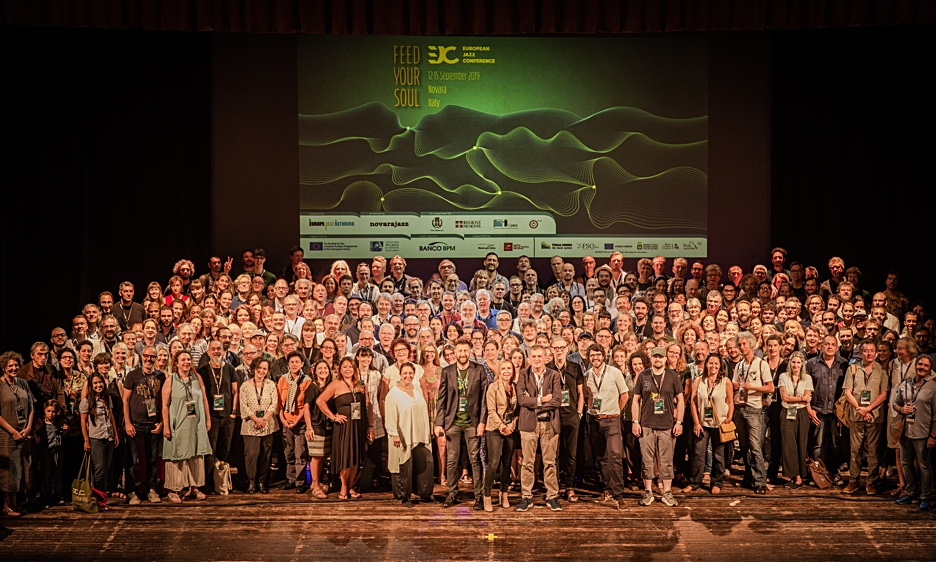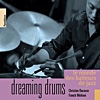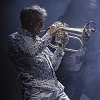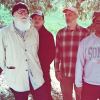Home » Jazz Articles » Live Review » European Jazz Conference 2019
European Jazz Conference 2019

Fascism is on the rise everywhere in the world and artists recognize that they have a function, to wake people up, to stir their activism and even to make them angry. Certain things are not to be accepted
—Tania Bruguera, installation and performance artist
European Jazz Conference 2019
Various Venues
Novara, Italy
September 12-15, 2019
For its sixth edition the European Jazz Conference dropped anchor in sunny Italy. Where Rome or Milan might have been more obvious locations for such a high- powered international gathering, the baton instead passed to Novara, in the Piedmont region of Italy's North-West. Novara, however, has jazz pedigree of its own, being home to the internationally renowned Novara Jazz Festival. More importantly, perhaps, there is a warmth in the personal encounters here that is sometimes lacking in major cities, and in that respect Novara was a most genial host.
This Roman-founded city of beautiful courtyards, squares and neo-classical architecture, stepped up to the plate and delivered a conference of multiple highlights.
Three hundred and seventy-five delegates from thirty-nine countries—the largest ever gathering of EJC attendees—did place some strains on the city's accommodation facilities, with some staying in hotels up to twelve kilometers from the center. One such remote hotel gained legendary status over the weekend, not least for the wall-sized mirrors in its bedrooms.
What Novara lacked in central accommodation that particular weekend it made up for with its outstanding hospitality. At no previous EJC has cheese played such a prominent role, with the local creamy Gorgonzola one of the stars of the weekend. Piedmont's famous rice and fine wines warmed bellies and gladdened hearts, and though the queues for the individually, chef-prepared pasta at lunch and dinner seemed interminable, the waiting, which was always worth it, did allow for lengthy conversations with those immediately behind or in front in the queue.
And conversations were really what the EJC 2019 was all about -conversations essentially about what jazz means in the twenty-first century. Two contrasting keynote speeches in Teatro Coccia provided inspiration aplenty, while more intimate discussion groups invited opinions on a wide range of topics pertinent to the world of jazz—programming, showcases, gender, new technology, and funding, to cite a few examples.
Those delegates from the UK and Ireland who thought a weekend in Novara would provide blissful relief from all things Brexit might have pretended not to notice room CL , where the topic was none other than the threat Brexit poses to the mobility of musicians. You can run from Brexit, but porca miseria, as the Italians sometimes say, you sure as hell can't hide.
On a lighter note, a blindfold test-type panel saw five up-and-coming Italian jazz musicians share their thoughts on historic Italian jazz recordings. Music was in even more plentiful supply in Novara than the Gorgonzola, with the showcases featuring half a dozen Italian bands. In addition, a double-header gala concert featured one of the greats of Italian jazz in Franco D'Andrea, and one of the most exciting new stars of the music in Gianluca Petrella.
All the music at EJC Novara 2019 is covered in a separate article by Ludovico Granvassu.
Keynote Speech 1
Du Yun: Creating a Living Heritage Together
Multi-faceted artist Du Yun wears many hats. As a composer the Shanghai-born, New York based artist works in the areas where orchestral, opera, theatre, pop, electronics and visual arts coincide. A multi-instrumentalist and curator, this "indie-pop diva with an avant-garde edge," as the New York Times once described her, won the 2017 Pulitzer Prize for her opera Angel's Bone.Technical issues meant a late start to the morning. Du Yun, however, was unfazed, and although she felt obliged to skip some slides, the message she delivered was a powerful one.
A major thread of Du's speech was the notion that, even though cultural memory runs deep, ownership of culture is problematic. Rather than claim ownership, Du's work is all about cross-cultural, cross-regional collaborations that illustrate and celebrate the fluidity of culture. She was dismissive of East-meets-West cultural projects, rejecting the simplistic binary.
Du shared a video of a trip to rural Tibet where a foundation she was representing was providing solar panels and electricity. Though the adults of the village were illiterate, it should perhaps have come as no surprise to learn that every kid in this village, situated at 4,000 metres above sea level, already possessed a smartphone.
One of the aims of the project was to encourage the children to preserve their traditional language and heritage. The children speak both Tibetan and Mandarin, and though it was left unsaid, the feeling that Chinese culture could totally absorb Tibetan tribal culture was never far away.
As the smartphones indicated, the ever-evolving culture that Du spoke of in her introduction, even in remote regions of the world, moves a lot faster than many on the outside can possibly imagine.
In the video, Du explained how a traditional heritage dance, full of color and movement, was the exclusive preserve of men, though the reason for the exclusion of women was not explained. In another segment a group of school children—the first generation of their community to attend school—were encouraged to share their songs. While the boys sang heartily, Du said that the girls were too shy to join in. Or, like the dance shown just before, it may be culturally ingrained that when the boys are "on stage" it is simply not their place to join in, but to remain as passive observers.
Du described how the boys won't teach the girls, but when Du lead the way the girls joined her in song. This idea of providing agency—and encouragement— was a recurring motif of Du's speech.
Tradition is not something pure, Du stated. Curiosity dictates that experiment happens naturally, and curiosity, she emphasized, should be encouraged.
Du highlighted Chinese opera and the Indian raga as examples of art forms whose traditions have been built on cultural and linguistic hybridity -the ever- evolving influence of geography and time. She could just as well have been talking about jazz. Culture, Du intimated, has always been about the embrace of new ideas. It was no contradiction in terms when Du called for both reverence and irreverence towards folk traditions.
Who defines what folk music is, what is traditional and what is experimental? Du asked. These are important questions, she stressed, as it's these gatekeepers that define the cannon. Experimentation is essential, Du countered. Risk-taking should be encouraged and mistakes accepted as part and parcel of the process. Music, she surmised, is about much more than mere theory.
And, in a nod to curators and programmers, Du underlined that risk does not start and end with the composer or performer. She sounded a note of warning to programmers, as they are "presenting stories to a community which may only resonate with a fraction of their cultural memory, but not their current life." Modern day lives, Du noted, are "messy" and any attempt to reduce an audience to a neat cultural package, or to patronize them "can be insulting if not laughable." The audience should be invested in the experience.
Du gave an example of this sort of contract between performer and audience when she detailed her project titled Disruption as Rupture. In this project, created in conjunction with New York artist Shahzia Sikander , a group of boys and girls sang in front of Lahore Fort. The children were from diverse religious and economic backgrounds, representing different cultures and traditions, Yun said, that ordinarily "don't talk to each other." For the children, and their families and peers in the audience, this performance became a powerful symbol, not only of a coming together of different cultures, but of the pushing forward of traditions.
In the Q&A that followed, Yun reiterated the idea that culture continually evolves and that no-one can claim exclusive ownership of it. "I own the sound of David Bowie as much as you do," Yun told the audience.
So rich and philosophical a speech surely merited a panel discussion with artists and programmers to dive deeper into the questions Yun had raised regarding ownership of culture, of cultural purity and authenticity, our relationship with traditional cannons and of the evolutionary nature of culture. Addressed through the prism of jazz, such questions would likely have triggered a fascinating conversation.
Instead, the EJC 2019 moved swiftly onto a sort of blindfold music test featuring five of the Italian artists appearing in the EJC showcases. Eloisa Manera, Gaia Mattiuzzi, Ludovica Manzo, Filippo Vignato and Andrea Grossi made up the panel, which was chaired by Francesco Martinelli.
Blindfold Test: Italian Jazz
Few know Italian jazz, or indeed European jazz, better than Francesco Martinelli. Director of Siena Jazz Archive, lecturer, jazz journalist and promoter, Martinelli has dedicated a lifetime to this music. Martinelli is also the man behind the The History of European Jazz: The Music, Musicians and Audience in Context (Equinox Publishing, 2018), the first major work of its kind to draw on native expertise to address the jazz histories of the forty-plus countries the book covers.Six compositions by historic Italian jazz groups were played, all but one of them in their entirety. The aim was not so much to test the panelists' knowledge of who was playing, but rather to listen to their thoughts on the music. All the tracks were recorded post WWII.
The tracks in order were: "Just One of Those Things" by pianist Umberto Cesari's trio from 1975; an improvisation by the avant-garde collective Gruppo di Improvvisazione Nuovo Consonanza; George Russell/Dizzy Gillespie's "Cubano Be" from a 1951 recording by the eighteen-piece Orchestra Francesco Ferrari; "Tempo e Relazione" by Giorgio Gaslini's Ottetto di Camera; an unaccompanied performance of "Blues for Bird" by alto saxophonist Massimo Urbani; trumpeter Nunzio Rotondo's soundtrack to the popular 1960's television detective series Nero Wolfe.
The panel's collective familiarity with the artists was impressive, as was their awareness of the importance of these individuals in the story of Italian jazz. If Italian music culture played an important role in the early formation of jazz, then Italy has also played an important role in the development of European jazz post-WWII.
The innovative collective Gruppo di Improvvisazione Nuovo Consonanza was founded in 1960 and represented one of the earliest improvising collectives in Europe. Girorgi Gaslini set up the first jazz courses in Italy. Massimo Urbani was one of the greatest alto saxophonists anywhere from the 1970s to his premature death in 1994. Martinelli and the panelists shed light on the threads that run from 1950s Italian jazz to today. The technical command, virtuosity and energy of Italy's post-WW II modernists is also a common denominator among contemporary Italian jazz musicians.
In a discussion dominated by musical analysis and history, Eloisa Manera spoke of the sadness and loneliness of Massimo Urbani, who died of a heroin overdose, aged 36 in 1993. "It is important to remember that artists are human beings," she said, before thanking the EJC for all its support of musicians.
The blindfold test with Martinelli and the five Italian musicians was both enjoyable and educational. The discussions helped illuminate some of Italy's historically important players, highlighted the tremendous diversity, virtuosity and adventure of those who paved the way, and painted a picture of continuity and progress from the 1950s until the present day.
Discussion Groups: Sharing Expertise Between Professionals
A major feature of the annual EJC are the afternoon sessions on areas of interest to the members of the Europe Jazz Network. This year, subjects included: the effectiveness and impact of showcases; immersive technologies and their ability to enhance live music presentation; funding streams; the mobility of musicians around Europe in the wake of Brexit; new European copyright regulations; the latest in jazz research.These sessions came a day after the parallel working groups that focused on EJN's ongoing projects, subjects of which included gender balance, social inclusion and environmental impact. Those sessions were for EJN members only. A full report the EJN's ongoing projects and the 'sharing expertise' sessions will be available on the EJC conference report, due for publication in December.
Suffice it to say, the great range of activity around the business of making jazz music, whether it be socio-political, logistical and regulatory, financial, academic or technological, is proof that jazz does not exist in a vacuum. Like any industry, a large number of individuals and organisations oil the wheels of the commerce and help enable the art to flourish. That said, it's important to remember that it's the music and the musicians who drive everything.
Keynote Speech # 2
Tania Bruguera: Political Timing Specific Art
Living and working between her native Cuba and New York, Tania Bruguera's installation and performance art examines the relationship between political power and art. Though this internationally renowned artist has been arrested and jailed on more than one occasion for her art, she continues to jab a metaphorical stick in the face of authoritarian rule as she draws attention to political injustices.Site specific art that embraces culture and history is all very well, she told the EJC audience, but it must provoke discussions that wouldn't ordinarily take place in everyday walks of life.
Central to Bruguera's art, she explained, is her notion of time-specific political art. Instead of responding with art to the political abuse of power, say, five years after the event, it is her aim to raise difficult issues when people's nerves are still raw.
Another important consideration for Bruguera is that her art must be part of people's reality. A number of photographs exemplified Bruguera's art, much of which has a metaphorical feel to it. As the artist explained, the beauty of metaphor in political art is that people can interpret it whatever way they wish.
Some of Bruguera's projects are more politically literal than others, for example, The Francis Effect, which, she explained, involved collecting signatures to petition Pope Francis to ask for Vatican citizenship for all the undocumented migrants and refugees in the world. This petition, which to date has collected over 20,000 signatures is a challenge to the political power of the Pope, his office and the Vatican state. It is also, at its core, about humanity.
Going deeper into the concept of political timing-specific art, Bruguera described an art installation she conceived of with the thaw in Cuban-US relations, back when Fidel Castro and Barack Obama were getting a little cozier together. The installation consisted of a microphone in Revolution Square, Havana, and an open invitation to people to announce their fears and hopes for Cuba. The installation brought together a small number of dissidents and activists; a gathering far smaller than the one million Cubans who gathered to hear a Castro speech. The important thing, Bruguera said, is to demonstrate political agency to people. A single person can voice an idea that everyone is thinking.
That particular installation and gathering saw over eighty arrests, including Bruguera, but she used the multiple interrogation sessions she faced to discuss art, installation and theatre with her interrogators.
When her project to read aloud Hannah Arendt's book The Origins of Totalitarianism for one hundred hours resulted in a work team arriving to drill and break up the road and thus drown out the reading, Bruguera celebrated the government's creative response to her art.
A driving question for Bruguera is not so much what is art, but what is art for? Raising issues, yes, challenging authoritarian politics, that too. But Bruguera explained, vital to her art is her attempt to bring people into the process. This came to pass with Bruguera's commission by London's Tate Modern, where a giant, 'invisible' floor painting of an anonymous refuge—given the name Joseph—was revealed with the heat of human contact. Many people were required to achieve the full effect, a comment on mass participation in bringing about political change.
And what better way to bring people into a project than by creating a new community, one that only came into being with an art project? Bruguera created the Tate Group, neighbors of the Tate Modern, one of whom had never set foot inside.
The Tate Group asked the Tate Modern to name one of its buildings after someone revered and respected in the neighborhood. The person in question was Natalie Bell, a veteran social worker in the area. Bell had found the refugee 'Joseph' homeless on the street and helped him to get on his feet. Today, thanks to the lobbying of the Tate Group—strangers to each other before this project began—one half of the building is named after Natalie Bell.
For Bruguera, art cannot be beautiful unless it has an ethical framework. "Political art may not change the world, but it can change our political behavior."
Politically, economically and environmentally, the world is in flux as never before. Bruguera sees a greater need than ever for artists to respond to the dangers. "Fascism is on the rise everywhere in the world and artists recognize that they have a function, to wake people up, to stir their activism and even to make them angry. Certain things are not to be accepted."
Coda
The Europe Jazz Network, with its work on social inclusion, gender balance and environmental awareness, is attempting to conduct its affairs in an ever more ethical framework. This work is important but there is still a long way to go before jazz is once more understood as a popular music that is accessible to all.Walking around the historic centre of Novara and surrounding neighborhoods one could observe Africans in not insignificant numbers. A Gay Pride manifestation was being held in the square right next to the EJC, with its own music to animate the crowd. Societies everywhere, we were reminded, are pluralistic. Is jazz? Once championed as the music of freedom and protest, jazz is all too often viewed by outsiders as music of the elite. And perhaps with good reason. Of course, that's not the full picture, but tackling that perception is perhaps the greatest challenge facing jazz programmers today.
Global Perspectives on New Ways of Programming
As a network, European predominantly, but with an increasingly global reach (Australia, Israel, Azerbaijan), the EJN is all about sharing expertise, experience and best practices. As jazz and its audiences continue to evolve, and as festivals seek to offer audiences new experiences, the art of programming and curating successful festivals becomes more demanding, more nuanced.This panel, moderated by Martyna Markowska—Artistic Director of Katowice JazzArt Festival—picked the brains of four of the world's most lauded festival directors: Johan Gijsen, Director of Le Guess Who? in Utrecht; Rainbow Robert, Managing Director of Vancouver International Jazz Festival; Louis Rastig, Artistic Director of A L'ARME! in Berlin; and Reiner Michalke, former Artistic Director of Moers Festival and currently Artistic Director of Monheim Triennale -a new festival in Germany.
The odd festival out of the four was the Monheim Triennale, not only because it's the only one not to operate annually, but because it will only celebrate its first edition in 2020. After many years directing jazz festivals, including the celebrated Moers Festival for eleven years, Michalke declared himself bored with jazz festivals and in need of a new challenge. His vision for Monheim Triennale, needless to say, is of a festival that embraces any music, regardless of genre.
This broad-church approach is also common to Le Guess Who?, L'ARME! and the more jazz centric VIJF. All three festivals boast quite eclectic line-ups that in a given year can see experimental hip-hop, avant-garde rock, electronic, noise and contemporary composed music rubbing shoulders with jazz of various stripes. Though this trend towards genre-inclusive/genre-fluid programming is becoming commonplace at jazz festivals throughout the world, Michalke no doubt still raised a few eyebrows in the audience when he said that jazz was an historic idiom of the twentieth century, adding that he was more interested in the music of today and tomorrow.
It wasn't the only time in the conference that someone spoke of a post-jazz era.
Rastig said that programming decisions follows on from the questions: why programme music? who is the music for? In the same way we speak of carbon footprints, a festival leaves a cultural footprint. This is why it is so important, he stressed, to understand the aims of a festival from the outset.
Robert explained how the VIJF's selection of artists is based on how they will relate to, inspire and strengthen the local scene. Collaboration between artists is another common denominator between the four festivals
All four directors spoke of communication, inspiration and innovation. Travelling, all agreed, is the best way to discover exciting new music. Surprisingly, perhaps, Michalke said that he didn't listen to CDs or watch YouTube for ideas. Besides travelling to showcase events and festivals, Michalke listened to the word-of-mouth recommendations of musicians and seasoned journalists.
Both Rastig and Robert have been brought in as co-curators of Michalke's Monheim Triennale -a case of three heads are better than one. Roberts also acknowledged the important collaborative relations between the VIJF and the Europe Jazz Network. Clearly, there is a difference between programming a festival of three or four days—pretty much the norm for jazz—and a festival like the VIJF, which runs for ten days. As Robert noted, the longer the festival, the greater the potential range and depth of the music on offer.
There are also different programming pressures for an annual festival compared to a tri-annual festival. The latter is surely expected to raise the bar, a challenge that Michalke welcomes. All four agreed that matching music with an appropriate venue is an absolutely crucial element of successful programming. As Michalke said, the very best music can sound strangely unsatisfying in the wrong venue.
Robert likely spoke for the others when she said: ""We have a commitment to surprise the people in our city. We want people to change the way that they think about what is inspiring in art and what music means to us as human beings."
Gijsen acknowledge the large number of incredible musicians around the world who work outside the industry to a significant degree. It is Le Guess Who?'s goal to find and help promote such musicians, he said, a sentiment that drew applause from the EJC audience.
This latter point was picked up by EJN member Nod Knowles, who suggested that future editions of the EJC could invite grassroots promoters, curators and musicians—those who work independently and who do not enjoy the luxury of funding or of operating with significant budgets—to see what could be learned from their approaches. "I think we would get another perspective that might prove inspiring," Knowles said to general applause.
On a Lighter Note...
The EJC is a bit like a large wedding -a gathering of an extended family and old friends. During the more solemn rituals a certain quiet gravitas prevails. In between the choreographed acts, however, old friends catch up and socialize. A very amiable atmosphere surrounds each EJC, and Novara, with its small-town feel, contributed a lot to the relaxed atmosphere at this year's conference. Novara opened its doors to EJC attendees, providing cultural tours on the Sunday to some of the city's most cherished sites: The Gallery of Modern Art Paolo and Adele Giannoni; the Cupola of San Guadenzio, the symbol of Novara; the Faraggiana Ferrandi Museum of Natural History; the Basilica of San Guadenzio; the Cathedral of Novara; all revealed something of the rich history, art, religion and culture of Novara.And who will forget the sight of Novara Jazz's Corrado Beldi entering the stage of the Teatro Coccia on a bicycle? The wheels were the prize for the person who had travelled farthest by bicycle or train to reach the conference. This initiative was part of the EJN's Take The Green Train programme, aimed at encouraging a lower carbon footprint. The winner, and proud recipient of the Novara Jazz-branded bicycle, was Nigel Slee of Jazz North, who travelled from Leeds, England, by bicycle and train.
To defend his title for the EJC 2020, Mr. Slee will probably need more than the one bottle of wine to steel him for for the one thousand, three hundred and seventy-six miles from Leeds to Sofia.
Paul Grabowsky: EJC Wrap Up
After three days of meetings, discussions, talks, music and good food, it fell to guest speaker Paul Grabowsky to summarize for the attendees the main points, as he saw them, of the EJC 2019. Pianist, composer and curator Paul Grabowsky is one of the most preeminent figures in the Australian arts and has an acute feel for the cultural roles of music and the arts in society.In a thoughtful and inspiring ten-minute summary of the EJC 2019 Grabowsky examined the contested ideas behind words like jazz, European and soul. In a broad-ranging speech he spoke of the ancient arts culture of Aboriginal Australia, alluded to the dangers of global warming and the rise of the far right, and praised the commitment and passion of the EJC attendees towards jazz.
Music formed the centre of Grabowky's talk. He underlined the capability of jazz/improvised music as positive force for the good, for transformation, for growth. He also recognized Europe's historic role in the embrace and propagation of jazz.
Perhaps it was no surprise that Grabowsky's most profound insights were inspired by the conference's two brilliant keynote speakers—Du Yun and Tania Bruguera. From Yun he focused on her notion of art and liminal spaces, drawing comparison to jazz, itself the result of different forces coming together and becoming something new. Jazz, he said, is the great survivor, and though he didn't agree outright with Reiner Michalke's opinion that jazz is an idiom that belongs to the twentieth century, he seemed to suggest that the music we call jazz today is something very different.
From Bruguera, Grabowsky highlighted the idea that art itself contains the seeds of socio-political reform and creates a safe place for people to share their ideas and freedom, which he said was a beautiful expression of something that was also true of jazz.
Grabowsky concluded by sharing the three principles he imparts to his music students: technical command that allows you to say what you want to say; listening closely, which is a decision that allows communication to continue flowing; and trust. These three guiding principles, Grabowsky said, apply to life in general.
In Conclusion
Warm praise must go to Corrado Beldi, Enrico Bettinello and Veronica Devechi of Novara Jazz and their team, and to the Municipality of Novara, who together made the EJC 2019 such an enjoyable and memorable experience. The food, drink, general hospitality was second to none. Where else but Italy would a sommelier tell you off for the mix-and match cold foods on your buffet plate that make his job of recommending a wonderful red wine so difficult?The membership of the Europe Jazz Network and attendance at the conference grows year on year. Portable toilets may be the way forward as the EJC moves on to Sofia, Bulgaria for its next edition in 2020. Whether or not UK delegates will have to obtain special visa to travel there remains to be seen. Brexit will no doubt rumble on for some time to come. All will be revealed in next year's post-Brexit discussion group. Former members of the European Union will be welcome.
That the EJC address the big socio-political issues is testament to the seriousness of its intent. There may only have been two rather bemused individuals in the session on European Copyright, but that experts on such matters are invited to the EJC to share their knowledge on fundamentally important matters to the music industry and to musicians is also an indication that jazz does not exist in a bubble.
In an increasingly complex and often threatening world, jazz musicians, promoters, agents and festival directors are affected by the changing tides of economics, politics and legislation, just like everybody else. The Europe Jazz Network, through culture, is striving to improve communication, to increase mutual understanding and to encourage collaboration. That the EJN aspires to inclusiveness and equality in times when such ideals are widely threatened is both reassuring and something to be applauded.
The 2020 European Jazz Conference will be held in Sofia, Bulgaria, 10 -13 September.
Photo Credit: Courtesy of Emanuele Meschini/Novara Jazz, Mario Finotti
Tags
PREVIOUS / NEXT
Support All About Jazz
 All About Jazz has been a pillar of jazz since 1995, championing it as an art form and, more importantly, supporting the musicians who make it. Our enduring commitment has made "AAJ" one of the most culturally important websites of its kind, read by hundreds of thousands of fans, musicians and industry figures every month.
All About Jazz has been a pillar of jazz since 1995, championing it as an art form and, more importantly, supporting the musicians who make it. Our enduring commitment has made "AAJ" one of the most culturally important websites of its kind, read by hundreds of thousands of fans, musicians and industry figures every month.
































